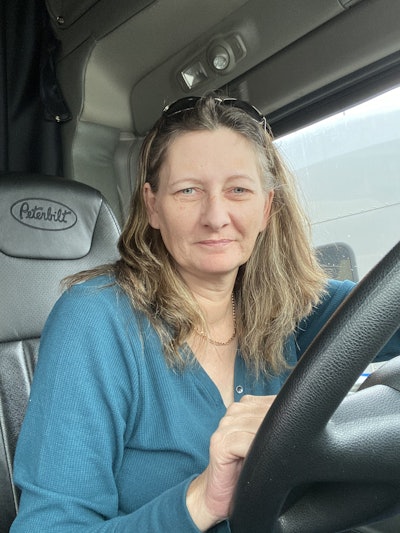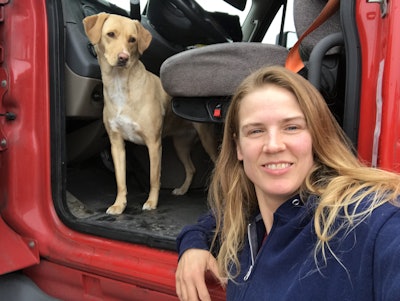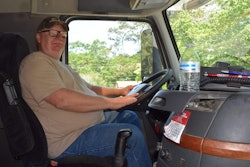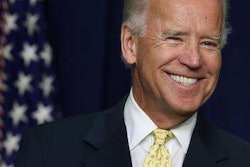When Suzie Helgerson drives, she sees emergency vehicles before most hearing people hear the sirens. Helgerson, 54, has been deaf since she became sick with German measles at the age of 6. She wears a hearing aid, uses sign language and speaks using an interpreter.
However, when driving team with her husband, Duke, who is also deaf, they have no interpreter with them. It’s the same for deaf truckers on the road.
 Suzie Helgerson
Suzie HelgersonThe U.S. Department of Transportation used to require CDL applicants with hearing difficulty to pass a “whisper test,” which excluded most deaf people from trucking careers. In 2013, after advocacy from Deaf Truckers United and the National Association for the Deaf, the Federal Motor Carrier Safety Administration granted its first exemptions from the hearing portion of the CDL physical.
Applying for a CDL hearing exemption takes months. If it’s granted, the CDL holder has to reapply every two years. There are approximately 900 deaf truckers, DTU estimates.
More ambitiously, NAD has petitioned FMCSA to remove the requirements for interstate truckers to be able to hear and speak. The group contends that those requirements violate the Rehabilitation Act of 1973.
In comments submitted Feb. 14 to FMCSA regarding the petition, the Owner-Operator Independent Drivers Association recommended that the current case-by-case exemption program be maintained “until sufficient safety data can be gathered and analyzed.”

One big rationale for the 2013 change was that modern truck technology helps level the playing field for deaf truckers. Most use a combination of electronic logging device, videophone relay, email and text to communicate.
“When I go to a shipper, I either speak, write on paper or else just show them my load info from my phone,” Helgerson says. She can read lips when a person is directly facing her and can speak in response. When someone doesn’t understand her, she writes on a notepad, types on her phone or uses sign language if the person knows it.
 Sandy Sloat
Sandy Sloat“Sirens can easily be detected from the mirrors, and we use our eyes, especially peripheral vision, more than hearing truckers do,” Helgerson says. “Our eyes are our ears.”
More than in the past, equipment malfunctions, such as air leaks, have warning lights. If a leak is detected, she uses soapy water spray to find the leak or asks a mechanic for help. Deaf truckers can feel a tire blowout by the truck’s vibrations.
The Helgersons, based in Waupaca, Wisconsin, drive for M.C. VanKampen Trucking, based in Wyoming, Michigan. Suzie Helgerson is Wisconsin’s first female deaf trucker.
Like Helgerson, Sandy Sloat, 39, relies on DTU for support. She was born deaf and raised in a family whose members were deaf. Sloat enjoyed her job welding with heavy-duty equipment in Alaska but always had wanted to drive big rigs.
When the CDL hearing requirements changed in 2013, she moved to Texas, enrolled at the Amarillo College Truck Driving Academy and got her license. She has been driving for more than five years, currently for Crete Shaffer.
Sloat, who has her green belt in karate, says she’s not worried about her personal safety on the road. “I’ll see it before you hear it,” she says. And that applies to her driving as well. “I’ve seen distracted hearing truckers run through red lights. I feel like as a deaf trucker, I’m way too alert to do that.”
The positive attitude of deaf truckers like Helgerson and Sloat is what attracted Autumn Daniel, an American Sign Language interpreter and a certified CDL instructor, to work at the Amarillo academy, though Sloat wasn’t among her students. Daniel’s dad drove over the road for 40 years, and her mom drove with him for 20 years.
“Your hearing is just not as important as your other senses in a truck, especially with the advent of cellular devices, Qualcomms and other technology,” Daniel says. “The lack of hearing is not a hindrance. It is merely a challenge, needing to be met with simple solutions while on the road.”










